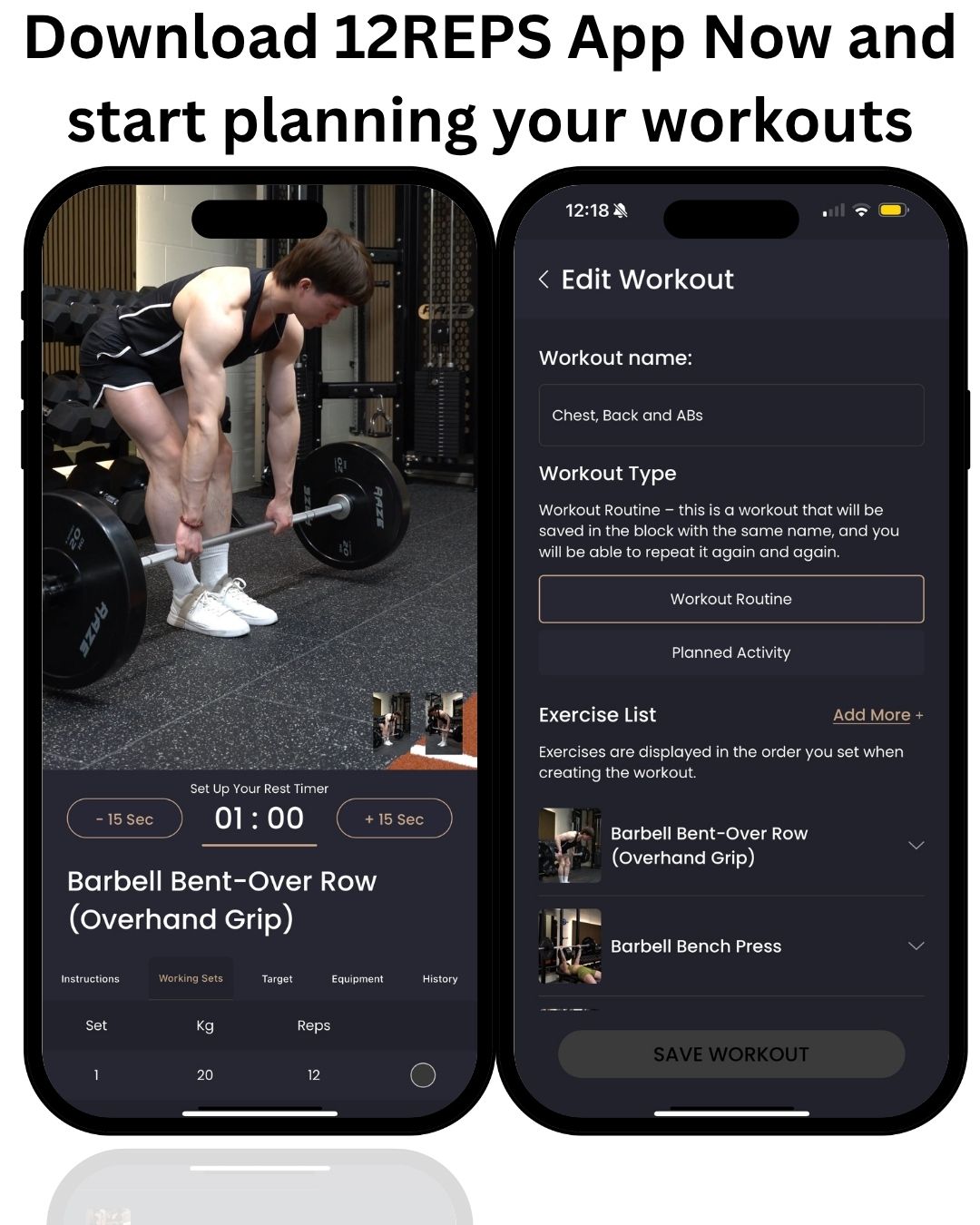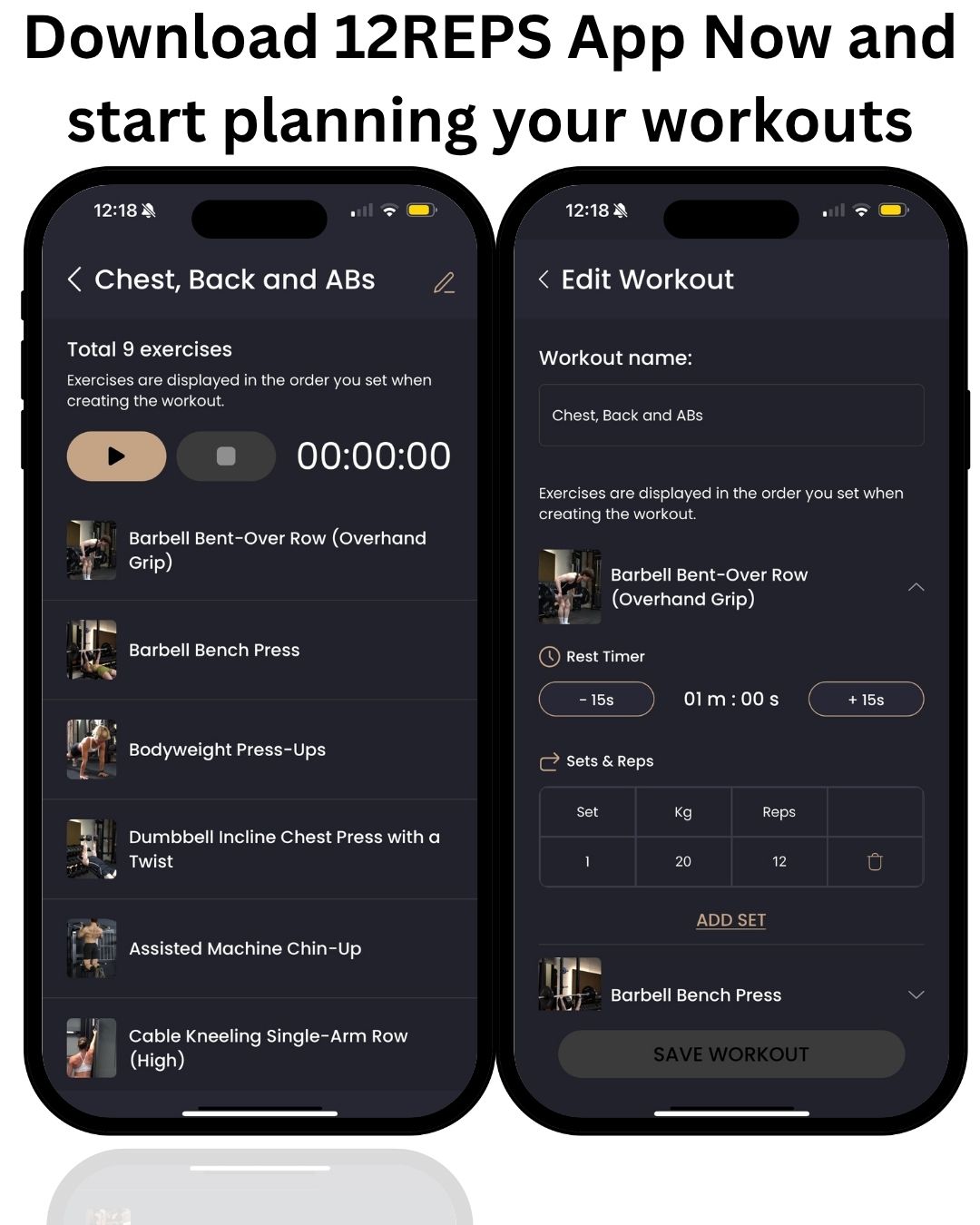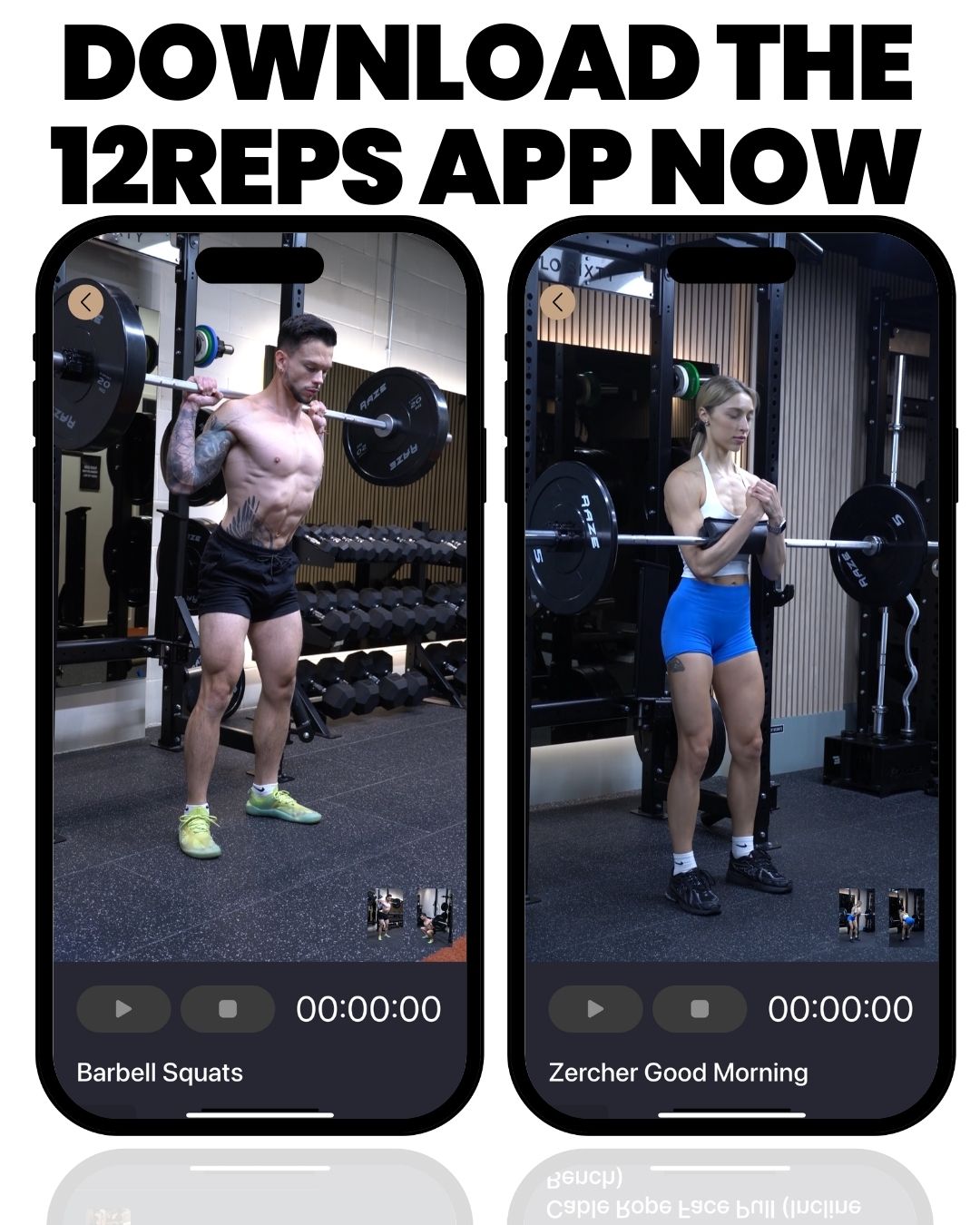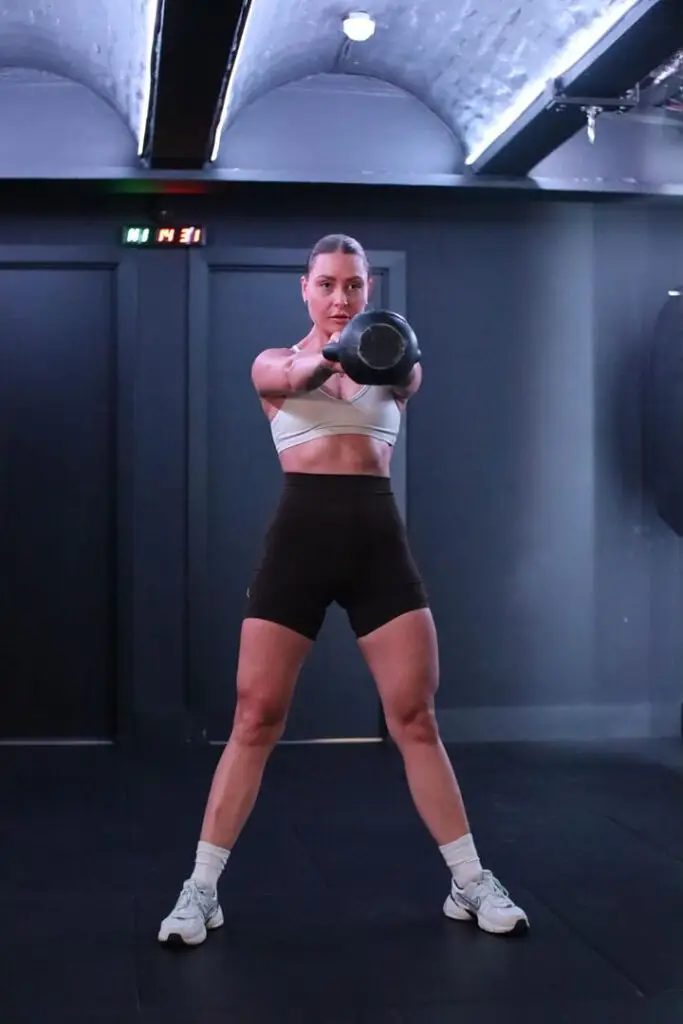By Will Duru, BSc (Hons) Sport and Exercise Science, Award-winning Personal Trainer with over 10 years of experience in strength training and optimising recovery
As a personal trainer with over a decade of experience, I’ve seen a significant shift in the fitness world. More and more women are embracing strength training, and for good reason. Gone are the days when lifting weights was seen as a purely masculine pursuit. Today, we understand the incredible benefits that strength training offers women of all ages, but it’s particularly crucial for those in their late twenties and beyond.
Starting a strength training journey around the age of 28 can be a game-changer for your long-term health and well-being. As we enter our thirties, our bodies naturally begin to lose muscle mass and bone density. This process, known as sarcopenia and osteopenia, can lead to a slower metabolism, increased risk of injury, and a decline in overall physical function. However, the good news is that strength training is a powerful tool to combat these age-related changes. By regularly challenging your muscles, you can not only maintain but also increase your muscle mass and bone density, setting yourself up for a stronger, healthier future.
But the benefits don’t stop there. Strength training can also have a profound impact on your mental health. The sense of accomplishment that comes from lifting a heavier weight or mastering a new exercise can be incredibly empowering. It builds confidence, reduces stress, and can even alleviate symptoms of anxiety and depression. Plus, let’s not forget the aesthetic benefits. Building lean muscle can help you achieve a more toned and defined physique, boosting your body confidence and helping you feel more comfortable in your own skin.
In this article, I’ll guide you through a 12-week beginner’s weight training program designed specifically for women. We’ll use a combination of free weights, machines, and bodyweight exercises to build a strong foundation and progressively challenge your body. I’ll also introduce you to the 12Reps app, a powerful tool that can help you track your progress, perfect your technique, and stay motivated on your fitness journey. So, if you’re ready to unlock your inner strength and transform your body and mind, let’s get started.
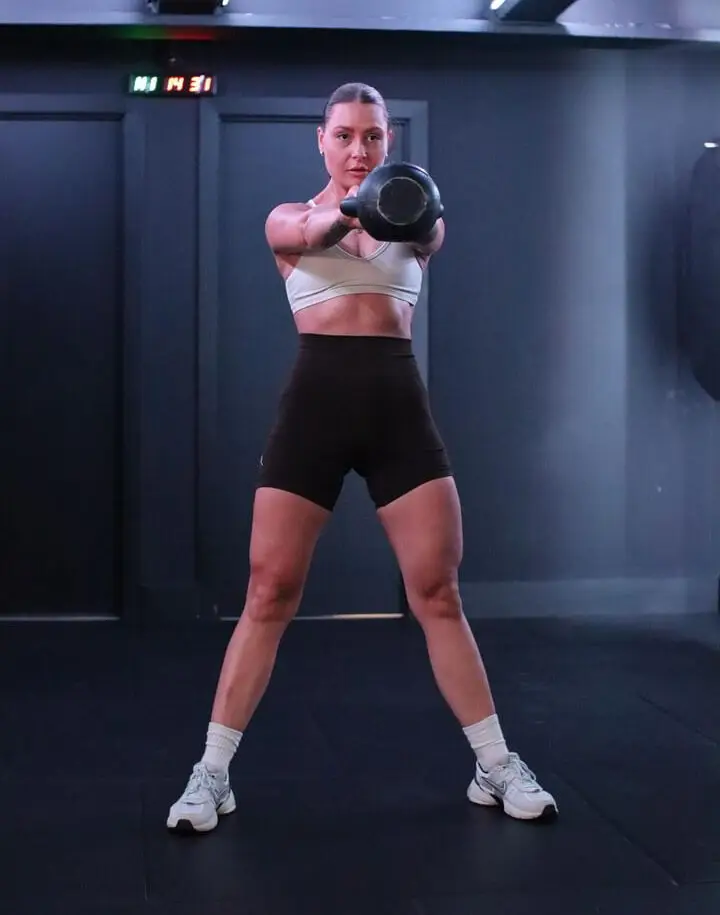
Why Strength Training is Essential for Women
For many women, the idea of strength training can be intimidating. Images of bodybuilders with bulging muscles often come to mind, creating a misconception that lifting weights will make you “bulky.” However, this couldn’t be further from the truth. Women’s bodies are physiologically different from men’s, and we don’t produce enough testosterone to build the same level of muscle mass naturally. Instead, strength training helps women develop a lean, toned physique while providing a wealth of health benefits that are particularly important as we age.
One of the most significant benefits of strength training for women is its impact on bone health. As we approach our thirties, our bone density naturally begins to decline, putting us at a higher risk of developing osteopenia and osteoporosis later in life. Strength training, however, can help to combat this. By placing a healthy amount of stress on your bones, you stimulate the production of new bone tissue, leading to increased bone density and a reduced risk of fractures [1].
In addition to strengthening your bones, resistance training also plays a crucial role in maintaining a healthy metabolism. As we get older, our metabolic rate tends to slow down, making it easier to gain weight. However, by building and maintaining lean muscle mass through strength training, you can effectively boost your metabolism. Muscle tissue is more metabolically active than fat tissue, meaning it burns more calories at rest. This can help you to manage your weight more effectively and maintain a healthy body composition.
But the benefits of strength training extend beyond the physical. The mental and emotional rewards are just as significant. The process of setting and achieving new strength goals can be incredibly empowering, boosting your self-confidence and self-esteem. The focus and concentration required during a workout can also be a form of moving meditation, helping to reduce stress and anxiety. Many women find that strength training becomes a form of self-care, a dedicated time to focus on themselves and their well-being.
Furthermore, strength training can have a positive impact on hormonal balance. Regular resistance exercise has been shown to help regulate hormones such as estrogen and progesterone, which can be particularly beneficial for women as they navigate the changes that come with perimenopause and menopause [2]. By incorporating strength training into your routine, you can help to alleviate some of the symptoms associated with these life stages, such as hot flashes, mood swings, and sleep disturbances.
Finally, let’s not forget the practical benefits of being strong. Everyday tasks, such as carrying groceries, lifting children, or moving furniture, become easier and less strenuous when you have a strong and capable body. This increased functional strength can improve your quality of life and help you to maintain your independence as you age.
In short, strength training is not just about building muscles; it’s about building a stronger, healthier, and more resilient you. It’s an investment in your long-term health and well-being, and it’s never too late to start. So, if you’re ready to take control of your health and unlock your full potential, there’s no better time to begin your strength training journey.
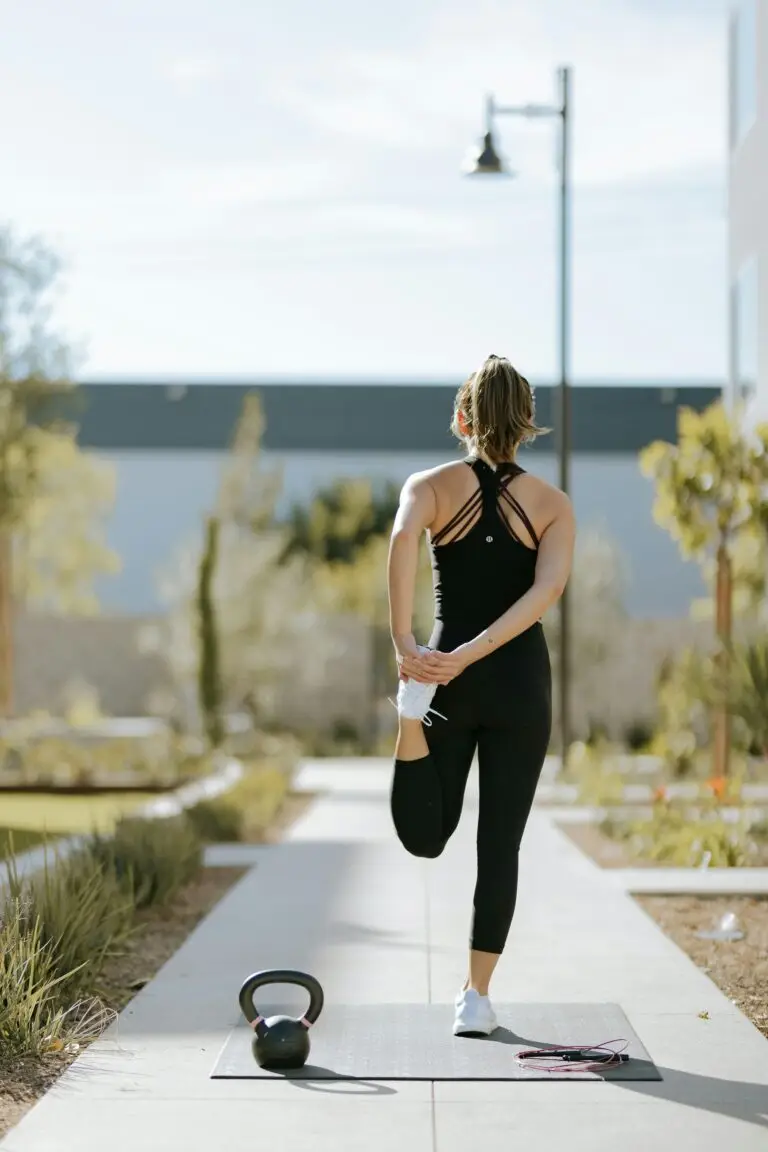
Introducing the 12Reps App: Your Ultimate Training Partner
In today’s digital age, we have a wealth of tools at our fingertips to help us on our fitness journeys. One of the most powerful of these is the workout tracking app. A good strength training app can be like having a personal trainer in your pocket, guiding you through your workouts, tracking your progress, and keeping you motivated. And when it comes to strength training apps, 12Reps stands out from the crowd.
As the founder of the 12Reps app, I designed it with one simple goal in mind: to make strength training accessible, effective, and enjoyable for everyone, regardless of their experience level or access to equipment. I’ve seen firsthand how a lack of structure and guidance can lead to frustration and a lack of results in the gym. That’s why 12Reps is more than just a workout tracker; it’s a comprehensive training platform that provides you with everything you need to succeed.
One of the key features of the 12Reps app is its extensive exercise library. With over 1,500 exercise demos, you’ll never be left wondering how to perform a movement correctly. Each exercise comes with a detailed video demonstration and form tips from a certified personal trainer, ensuring that you’re performing each movement safely and effectively. This is particularly important for beginners, as it helps to build a strong foundation and prevent injuries.
But the 12Reps app is more than just a library of exercises. It’s a smart training partner that helps you create personalised workout plans tailored to your specific goals. Whether you want to build muscle, lose fat, or improve your endurance, the app’s intelligent filtering system can generate a plan that’s right for you. You can filter by body part, equipment, or workout type, making it easy to create a routine that fits your needs and preferences.
The app also takes the guesswork out of progressive overload. As you get stronger, the app will automatically adjust your workouts to ensure that you’re continuously challenging your body. This is crucial for making consistent progress and avoiding plateaus. You can also track your progress over time, with clear graphs and statistics that show you how far you’ve come. This can be incredibly motivating and can help you to stay on track with your goals.
But perhaps the most important feature of the 12Reps app is its ability to track your workouts. By logging every rep, set, and weight, you create a detailed record of your training history. This allows you to see what’s working and what’s not, and to make informed decisions about your training. It also helps you to stay accountable to yourself and to your goals. When you have a clear record of your progress, you’re more likely to stay motivated and to continue pushing yourself to new heights.
In a world where we’re constantly bombarded with information, the 12Reps app cuts through the noise and provides you with a clear, concise, and effective way to train. It’s a tool that can help you to build confidence in the gym, to train with purpose, and to achieve the results you’ve always wanted. So, if you’re ready to take your training to the next level, I encourage you to download the 12Reps app and see the difference for yourself.
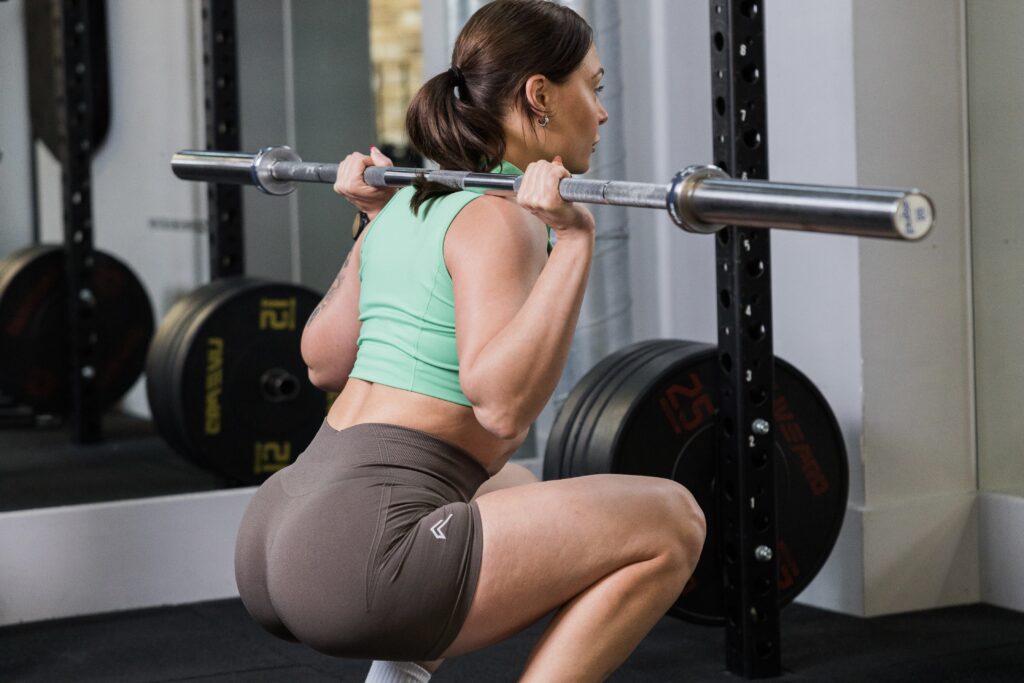
The 12-Week Beginner’s Weight Training Program
Now that you understand the importance of strength training and have a powerful tool in your arsenal with the 12Reps app, it’s time to get to work. This 12-week program is designed to take you from a complete beginner to a confident and capable lifter. We’ll use a push/pull/legs split, which is a highly effective way to train your entire body and allow for adequate recovery. The program is divided into three phases, each lasting four weeks. As you progress through the phases, the intensity will increase to ensure that you’re continuously challenging your body and making progress.
In this first phase, the focus is on learning proper form and building a solid foundation. Don’t worry about lifting heavy weights; instead, concentrate on mastering the movements and establishing a consistent routine. Use the 12Reps app to watch the exercise demos and ensure that you’re performing each movement correctly. On cardio day, add running to the program, such as a 5-7km run or a 10-15km cycle.
Exercise | Sets | Reps | Weight/Resistance | Rest Period |
Dumbbell Chest Press | 4 | 10-12 | Light-Moderate | 60-90 seconds |
Dumbbell Shoulder Press | 4 | 10-12 | Light | 60-90 seconds |
Dumbbell Lateral Raises | 4 | 10-12 | Light | 45-60 seconds |
Tricep Dips (Assisted) | 4 | 10-12 | Bodyweight | 60 seconds |
Push-ups (Modified) | 4 | 10-12 | Bodyweight | 60 seconds |
Exercise | Sets | Reps | Weight/Resistance | Rest Period |
Lat Pulldown Machine | 4 | 10-12 | Light-Moderate | 60-90 seconds |
Seated Cable Row | 4 | 10-12 | Light-Moderate | 60-90 seconds |
Dumbbell Bent-Over Row | 4 | 10-12 | Light | 60 seconds |
Dumbbell Bicep Curls | 4 | 10-12 | Light | 45-60 seconds |
TRX Rows | 4 | 10-12 | Bodyweight | 60 seconds |
Exercise | Sets | Reps | Weight/Resistance | Rest Period |
Goblet Squats (Dumbbell) | 4 | 10-12 | Light-Moderate | 60-90 seconds |
Dumbbell Romanian Deadlifts | 4 | 10-12 | Light | 60-90 seconds |
Dumbbell Lunges | 4 | 10-12 each leg | Light | 60 seconds |
Plank Hold | 4 | 30-45 seconds | Bodyweight | 45 seconds |
Glute Bridges | 4 | 10-12 | Bodyweight | 45 seconds |
Exercise | Sets | Reps/Time | Weight/Resistance | Rest Period |
Kettlebell Swings | 4 | 30 seconds | Light Kettlebell | 30 seconds |
Medicine Ball Slams | 4 | 10-12 | Light Med Ball | 45 seconds |
TRX Mountain Climbers | 4 | 30 seconds | Bodyweight | 30 seconds |
Sandbag Carries | 4 | 20 meters | Light Sandbag | 60 seconds |
Burpees (Modified) | 4 | 8-10 | Bodyweight | 60 seconds |
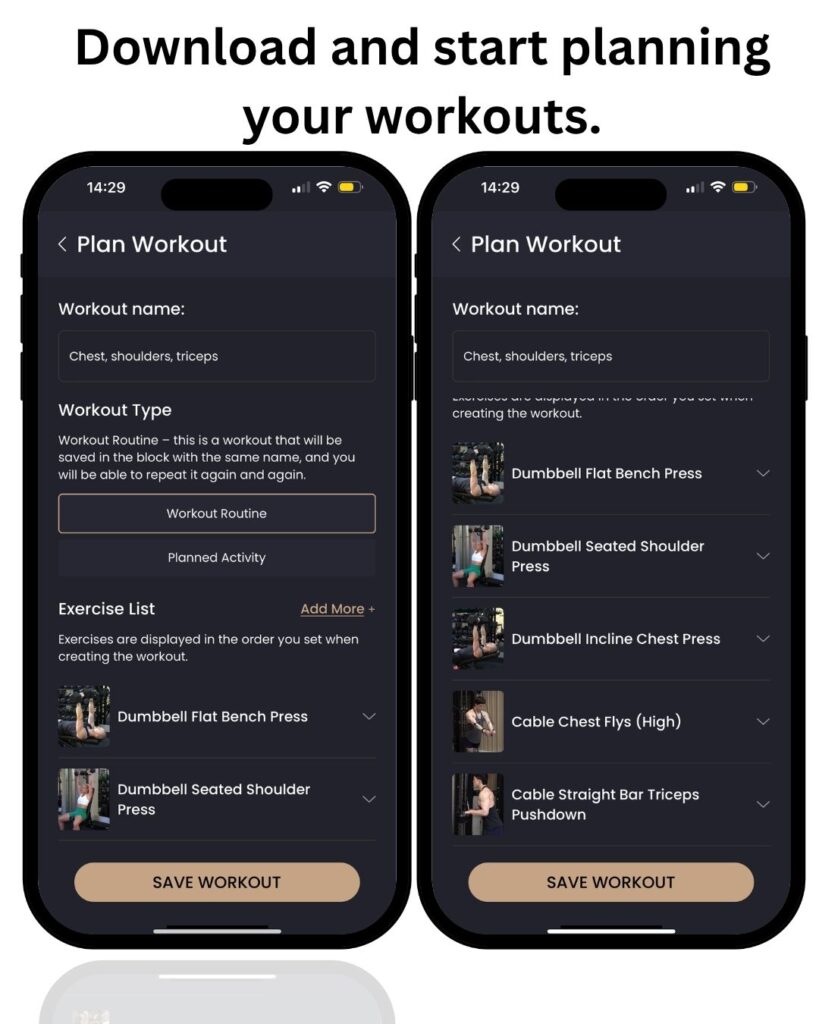
In this phase, we’ll start to increase the intensity by lifting heavier weights. You should have a good understanding of the exercises by now, so you can focus on pushing yourself a little harder. Remember to maintain proper form, and don’t be afraid to challenge yourself.
Exercise | Sets | Reps | Weight/Resistance | Rest Period |
Dumbbell Chest Press | 4 | 10-12 | Moderate | 90 seconds |
Dumbbell Shoulder Press | 4 | 10-12 | Light-Moderate | 90 seconds |
Dumbbell Lateral Raises | 4 | 10-12 | Light-Moderate | 60 seconds |
Tricep Dips (Full) | 4 | 10-12 | Bodyweight | 60 seconds |
Push-ups (Standard) | 4 | 10-12 | Bodyweight | 60 seconds |
Exercise | Sets | Reps | Weight/Resistance | Rest Period |
Lat Pulldown Machine | 4 | 10-12 | Moderate | 90 seconds |
Seated Cable Row | 4 | 10-12 | Moderate | 90 seconds |
Dumbbell Bent-Over Row | 4 | 10-12 | Light-Moderate | 60 seconds |
Dumbbell Bicep Curls | 4 | 10-12 | Light-Moderate | 60 seconds |
TRX Rows | 4 | 10-12 | Bodyweight | 60 seconds |
Exercise | Sets | Reps | Weight/Resistance | Rest Period |
Goblet Squats (Dumbbell) | 4 | 10-12 | Moderate | 90 seconds |
Dumbbell Romanian Deadlifts | 4 | 10-12 | Light-Moderate | 90 seconds |
Dumbbell Lunges | 4 | 10-12 each leg | Light-Moderate | 60 seconds |
Plank Hold | 4 | 45-60 seconds | Bodyweight | 45 seconds |
Glute Bridges (Weighted) | 4 | 10-12 | Light Dumbbell | 45 seconds |
Exercise | Sets | Reps/Time | Weight/Resistance | Rest Period |
Kettlebell Swings | 4 | 45 seconds | Moderate Kettlebell | 30 seconds |
Medicine Ball Slams | 4 | 12-15 | Moderate Med Ball | 45 seconds |
TRX Mountain Climbers | 4 | 45 seconds | Bodyweight | 30 seconds |
Sandbag Carries | 4 | 30 meters | Moderate Sandbag | 60 seconds |
Burpees (Standard) | 4 | 10-12 | Bodyweight | 60 seconds |
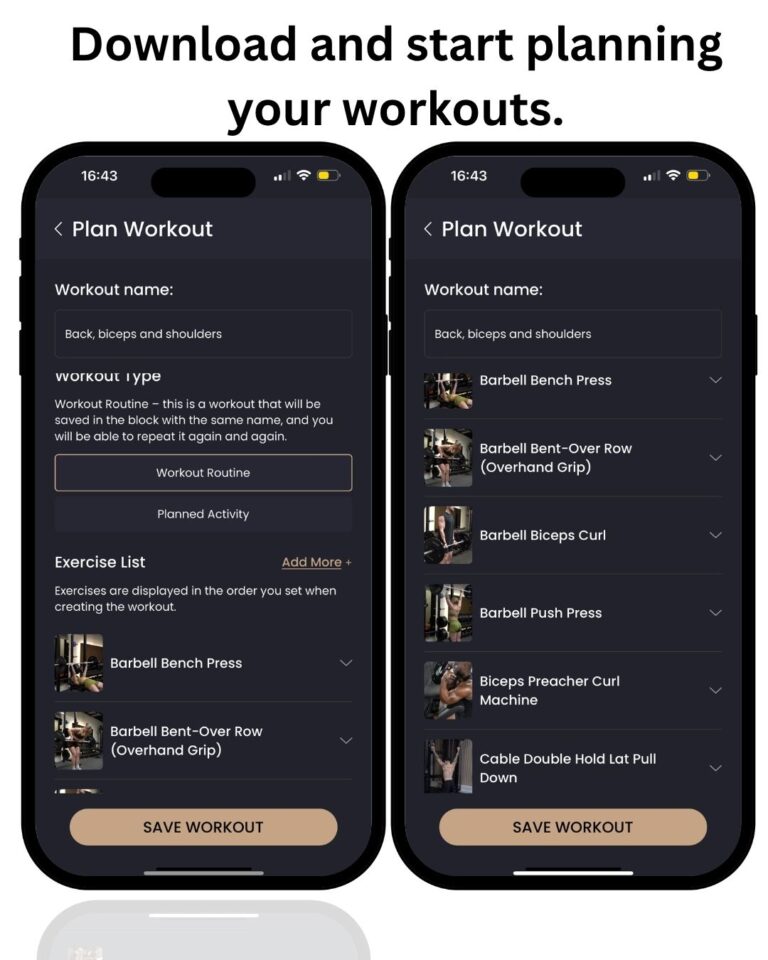
In the final phase, we’ll take things up another notch. We’ll introduce some more advanced exercises and continue to increase the weight. By the end of this phase, you’ll be amazed at how much stronger and more confident you’ve become.
Exercise | Sets | Reps | Weight/Resistance | Rest Period |
Barbell Bench Press | 4 | 10-12 | Moderate-Heavy | 2 minutes |
Dumbbell Shoulder Press | 4 | 10-12 | Moderate | 90 seconds |
Dumbbell Lateral Raises | 4 | 10-12 | Moderate | 60 seconds |
Tricep Dips (Weighted) | 4 | 10-12 | Light Weight | 60 seconds |
Push-ups (Elevated Feet) | 4 | 10-12 | Bodyweight | 60 seconds |
Exercise | Sets | Reps | Weight/Resistance | Rest Period |
Lat Pulldown Machine | 4 | 10-12 | Moderate-Heavy | 2 minutes |
Seated Cable Row | 4 | 10-12 | Moderate-Heavy | 90 seconds |
Barbell Bent-Over Row | 4 | 10-12 | Moderate | 90 seconds |
Dumbbell Bicep Curls | 4 | 10-12 | Moderate | 60 seconds |
TRX Rows (Single Arm) | 4 | 10-12 each arm | Bodyweight | 60 seconds |
Exercise | Sets | Reps | Weight/Resistance | Rest Period |
Barbell Back Squats | 4 | 10-12 | Moderate-Heavy | 2 minutes |
Barbell Romanian Deadlifts | 4 | 10-12 | Moderate | 2 minutes |
Dumbbell Bulgarian Split Squats | 4 | 10-12 each leg | Moderate | 90 seconds |
Weighted Plank Hold | 4 | 60+ seconds | Light Weight | 60 seconds |
Hip Thrusts (Barbell) | 4 | 10-12 | Moderate | 90 seconds |
Exercise | Sets | Reps/Time | Weight/Resistance | Rest Period |
Kettlebell Swings | 4 | 60 seconds | Heavy Kettlebell | 30 seconds |
Medicine Ball Slams | 4 | 15-20 | Heavy Med Ball | 45 seconds |
Sledge Push | 4 | 20 meters | Moderate Weight | 90 seconds |
Sandbag Carries | 4 | 40 meters | Heavy Sandbag | 90 seconds |
Burpees (Jump Variation) | 4 | 12-15 | Bodyweight | 60 seconds |
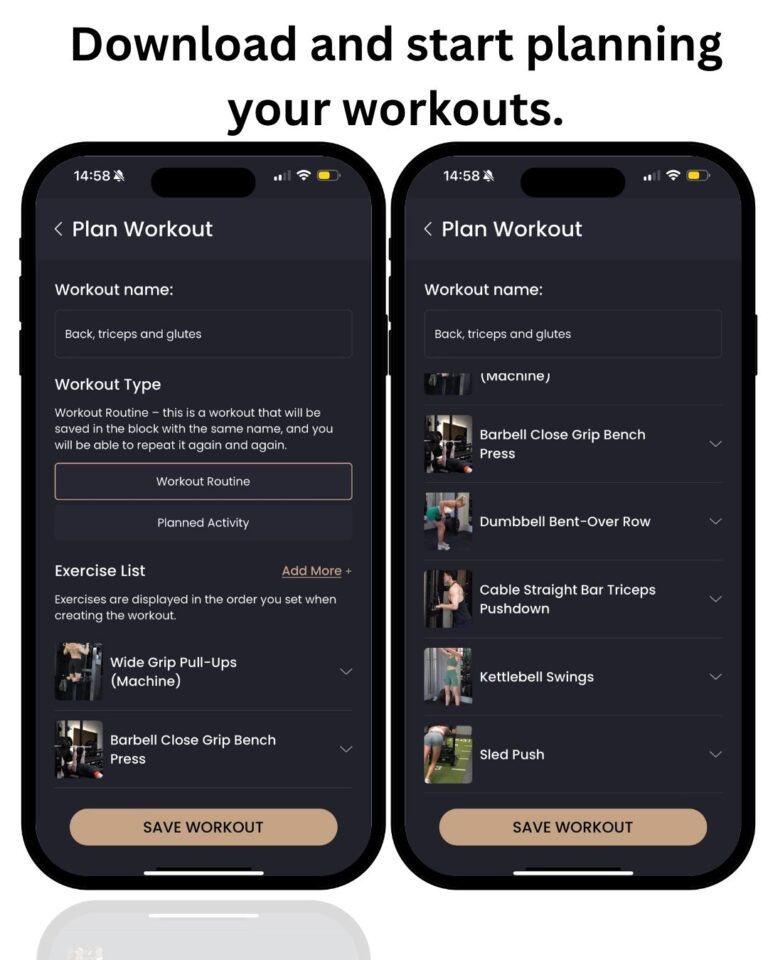
Tracking Your Progress and Ensuring Proper Technique
As you embark on this 12-week journey, it’s crucial to not only follow the program but also to track your progress and ensure that you’re performing each exercise with proper technique. This is where the 12Reps app becomes an invaluable tool. By consistently tracking your workouts, you’ll be able to see how far you’ve come, identify areas for improvement, and stay motivated to reach your goals.
The Power of Tracking
Tracking your workouts is about more than just logging numbers; it’s about creating a data-driven approach to your training. When you track your sets, reps, and weights, you’re creating a detailed record of your performance. This data allows you to see patterns and trends in your training, which can help you to make informed decisions about when to increase the weight, when to focus on form, and when to take a rest day. The 12Reps app makes this process seamless, with an intuitive interface that allows you to log your workouts with just a few taps. You can also view your progress over time with clear graphs and statistics, which can be a powerful motivator.
Mastering Your Technique
Proper technique is paramount when it comes to strength training. Not only does it ensure that you’re targeting the right muscles, but it also helps to prevent injuries. The 12Reps app’s extensive exercise library is an excellent resource for learning and perfecting your form. Each exercise is accompanied by a detailed video demonstration and form tips from a certified personal trainer. Take the time to watch these videos before you perform a new exercise, and don’t be afraid to practice the movements with a lighter weight until you feel confident.
Here are a few key principles to keep in mind when it comes to technique:
- Maintain a neutral spine: For most exercises, you’ll want to keep your back straight and your core engaged. Avoid rounding or arching your back, as this can put unnecessary stress on your spine.
- Control the movement: Avoid using momentum to lift the weight. Instead, focus on a slow and controlled movement, both on the way up and on the way down. This will help you to maximize muscle engagement and prevent injuries.
- Breathe: It’s important to breathe throughout each exercise. A good rule of thumb is to exhale on the exertion (the hardest part of the movement) and inhale on the release.
- Listen to your body: It’s normal to feel some muscle soreness after a workout, but you should never feel sharp or shooting pain. If you experience any pain, stop the exercise immediately and consult with a healthcare professional if necessary.
By combining the power of tracking with a focus on proper technique, you’ll be well on your way to achieving your strength training goals. Remember, consistency is key. Stick with the program, trust the process, and don’t be afraid to celebrate your progress along the way. You’ve got this!

